
Compensation and benefits professionals frequently face questions about the future of employee compensation in 2024 and beyond, as the needs of the modern workforce continue to evolve.
Market data from 2023 has already showcased a 4.4% income growth in all relevant industries, and this graph is also steadily moving upward in 2024.
Compensation strategies are becoming increasingly complex with the scope of variable pay and non-cash incentives coming into the picture. This has made compensation and benefits professionals realize that staying on top of compensation trends is crucial.
Let’s start by understanding the various aspects of compensation planning to find the key topics that are disrupting the compensation landscape.
A compensation plan is a set process for designing, optimizing, and communicating compensation packages to achieve maximum job satisfaction and employee engagement.
An effective compensation plan would include creating a compensation philosophy, aligning it with organizational goals, creating a balance between cash and non-cash incentives, and communicating the offerings to the employees with complete transparency.
The primary objectives for which businesses need compensation planning are:
To understand the current compensation trends, you need to understand the various components of compensation that need to be considered while creating a compensation plan.
Direct compensation is monetary benefits that are given to employees in exchange for their services. The major components of direct compensation are:
Ensuring internal and external equity of pay is one of the most important parts when it comes to direct compensation. Having pay bands that are matched to the market data can help you standardize your direct compensation, hence reducing the scope of pay disparities.
Indirect compensation deals with both the financial and non-financial aspects of compensation planning. Indirect compensation has become an integral part of compensation management since the modern workforce requires more than just basic compensation.
This has led to a four-dimensional compensation management model that talks about:
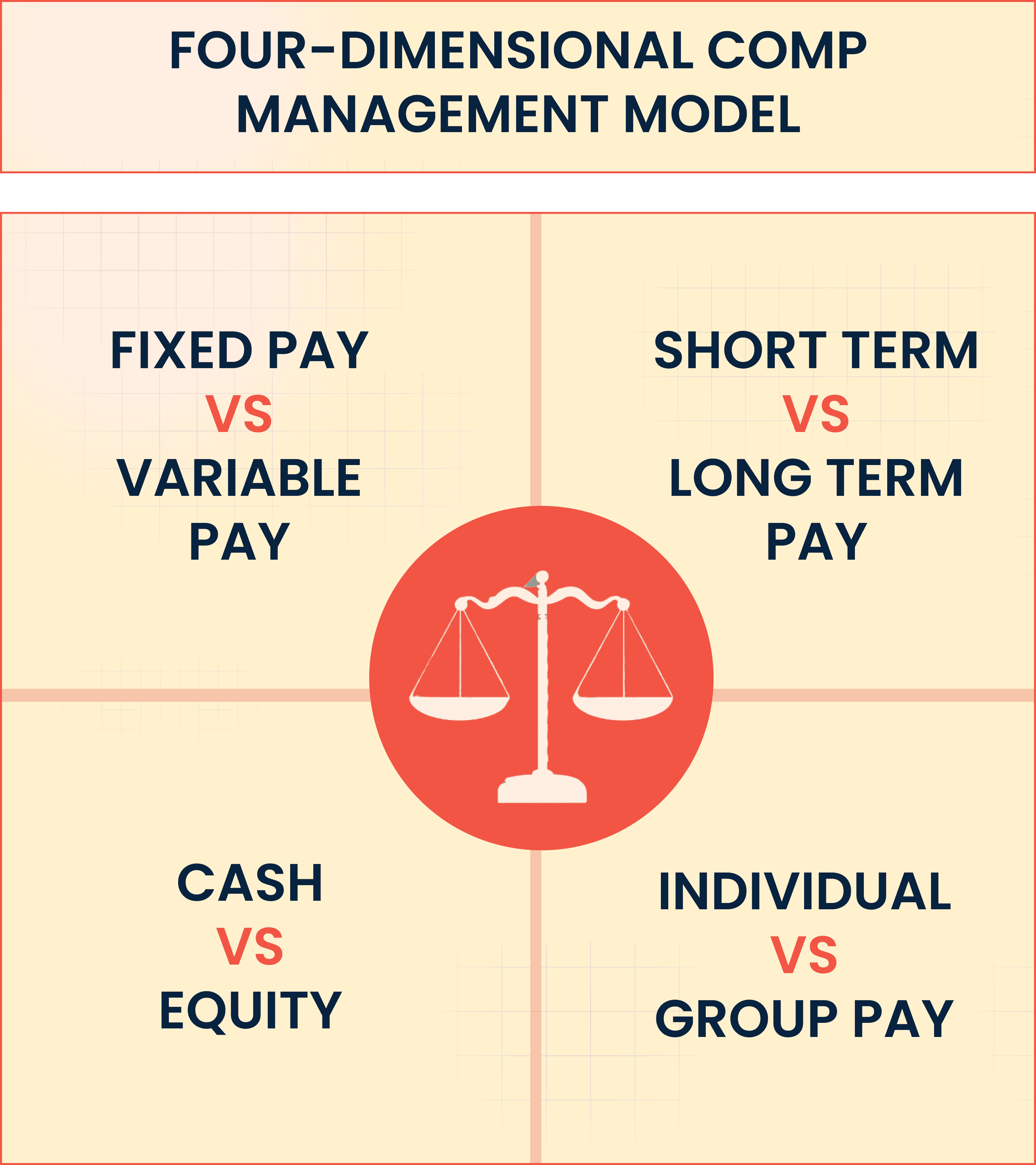
Of all the components of indirect compensation, equity options, and wellness benefits have taken center stage between the compensation and benefits professionals that provide maximum job satisfaction to employees.
While curating a compensation philosophy, organizations are giving a lot of thought to whether they want to go heavy on indirect compensation or rely on traditional direct compensation.
To find the right balance, however, you need to understand the key trends that are hot topics in the compensation industry right now.
Let’s study some of the key trends that can influence your compensation planning to achieve high employee engagement and retention.
Pay compression or internal pay inequities majorly happen due to economic climate (inflation/deflation), institutional factors (caused due to unoptimized pay ranges), and social factors (caused due to unconscious bias present within the organization).
This long-standing problem has raised the need for real-time data that can help solve this issue. To battle this, compensation management software like CompUp has introduced real-time compensation benchmarks which are created by analyzing multiple data points associated with a certain job role or function.
Using these benchmarks to create pay ranges is the new normal for ensuring equity of pay and optimizing employee performance within the organizations.
3 new factors are heavily influencing the pay transparency requirements within organizations:
According to a report by Josh Bersin, a well-communicated pay equity plan has a 13x positive impact on employee engagement and retention as compared to higher levels of compensation packages.
This means that employees want to be in the loop with what’s happening with their compensation structures. Whether they are being compensated fairly according to both internal and external benchmarks.
Following this trend, compensation committees are now helping employees track their economic growth within the organization to build a greater level of trust and confidence in individual employees.
Performance management can have a significant impact on employee retention. According to a study, 85% of employees mentioned that they would consider quitting after an unfair performance review.
To make performance reviews more fair and efficient, companies are now bringing in different strategies that would help them create competitive compensation strategies:
AI-driven monetary compensation is setting new goals in the industry. Adobe has reported that since bringing an AI-driven feedback system, they have seen a 30% increase in employee satisfaction in their workplace.
The most significant implementation of AI in compensation management has been for creating salary bands and handling merit increases which till now were done on spreadsheets. The shift to an AI-driven system has brought about a lot of changes including:
CompUp is a compensation management platform equipped with features that make your compensation planning future-ready with AI-driven capabilities.
The breakthrough is that it acts as an all-in-one solution that helps you create salary bands with real-time benchmarks, run merit and increment cycles, compensation survey management, people analytics, communicate total rewards, and more. Some of the most highlighted features of CompUp are:
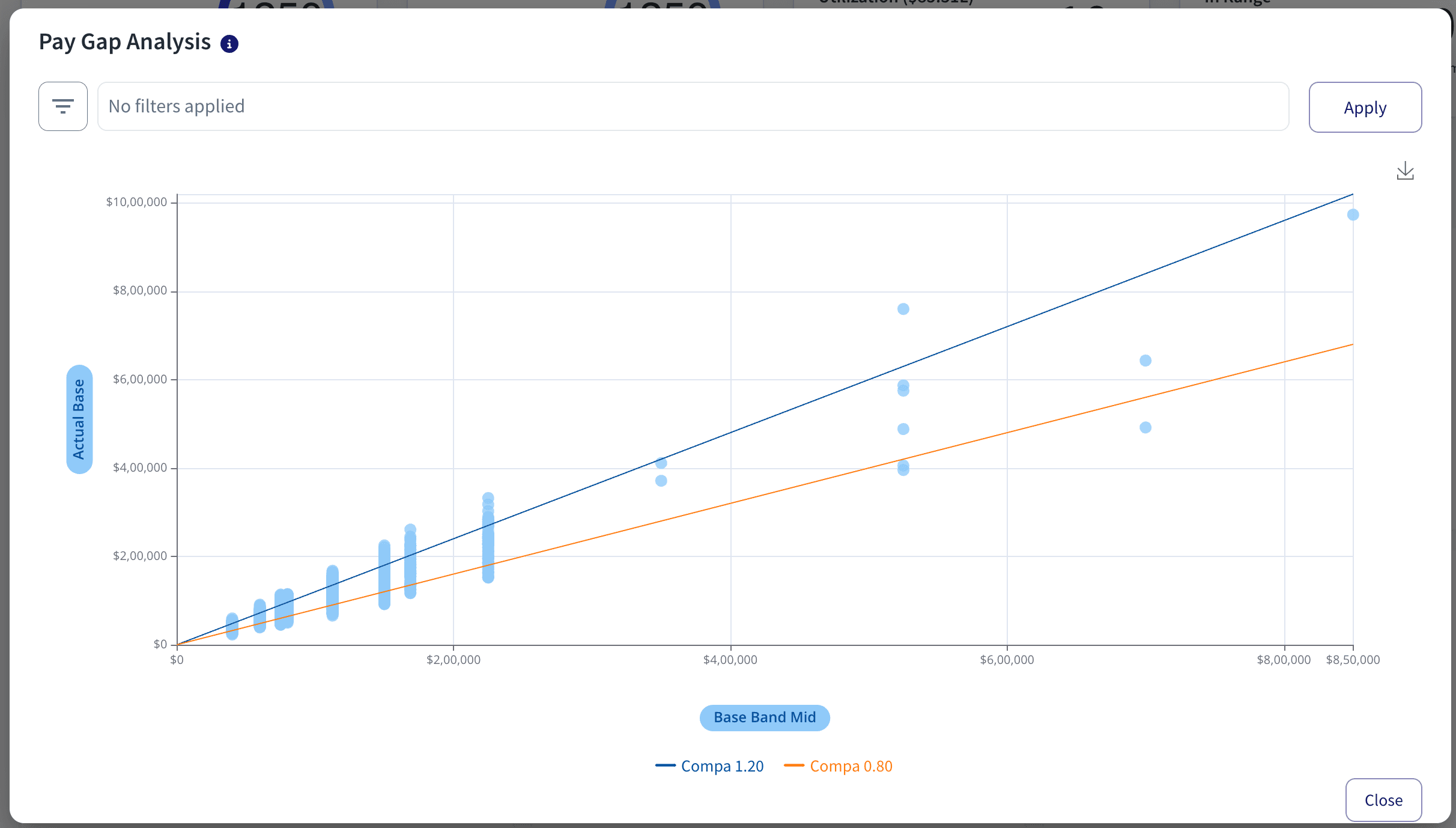
The dashboard has a budget utilization chart that does a comparative study to derive the maximum cost value of your compensation budgets.
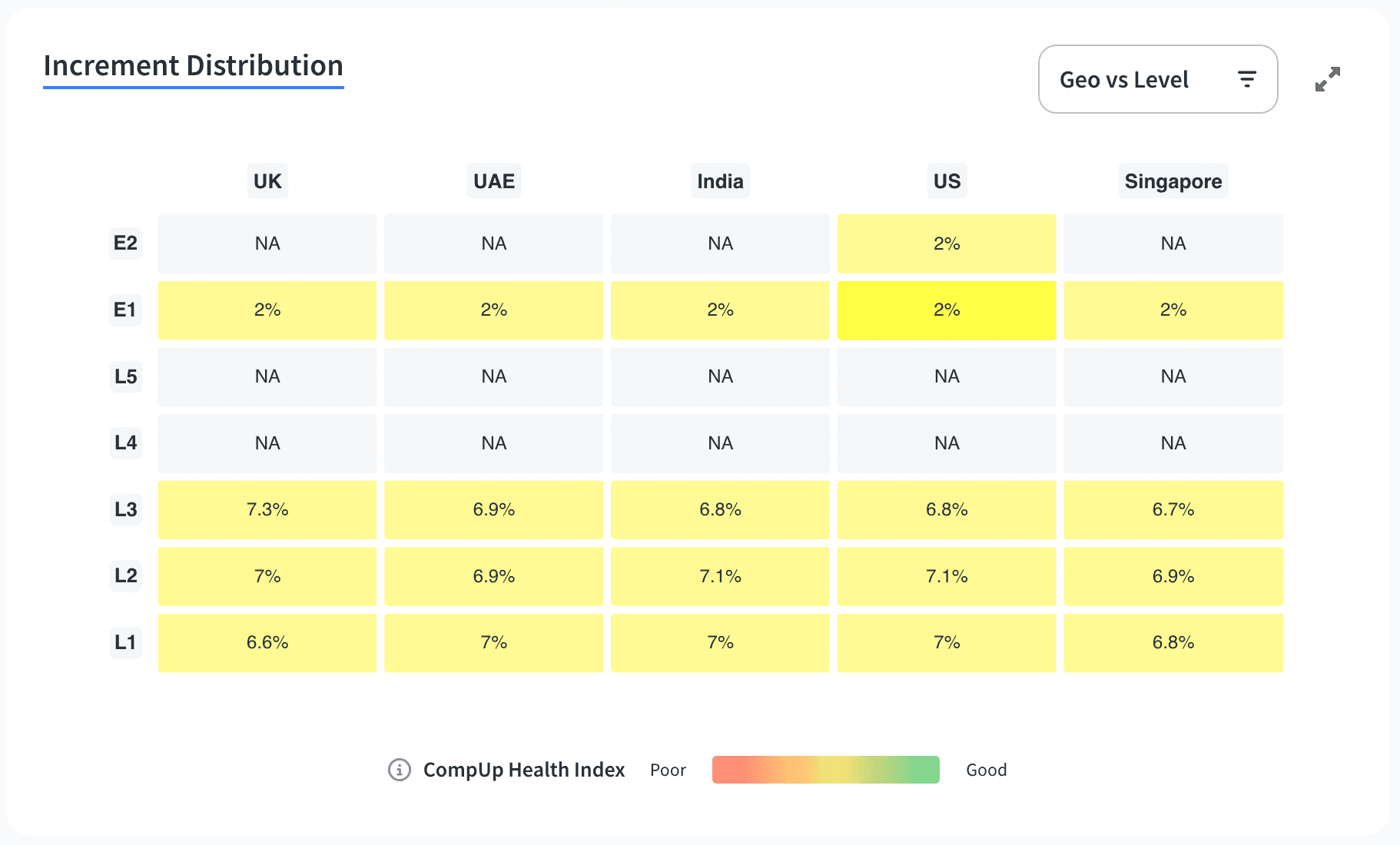
It allows you to study the increment distribution throughout your workforce to help you get a consolidated understanding of the effectiveness of your salary increase budgets.
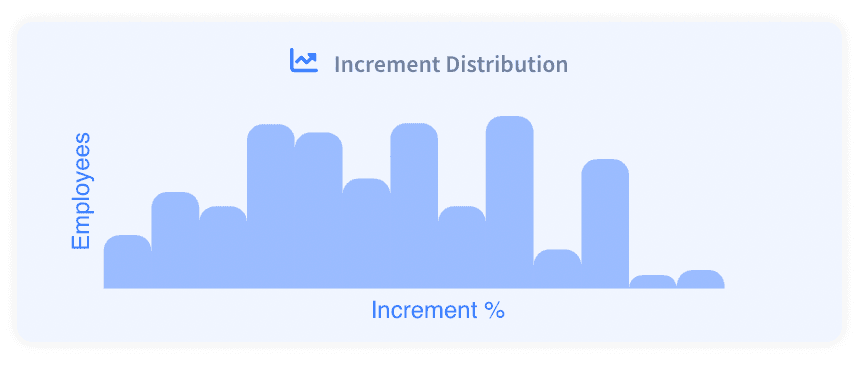
These 5 compensation trends prove that conversations around optimizing employee compensation are important and integrating AI capabilities to streamline compensation processes is the need of the hour.
CompUp is equipped with technological advancements that cater to the dynamic needs of the current workforce. Additionally, the platform delivers insights gathered from a strong community of rewards professionals who are disrupting the compensation landscape with innovative thinking.
Click here to learn more about what makes CompUp an all-in-one compensation management platform.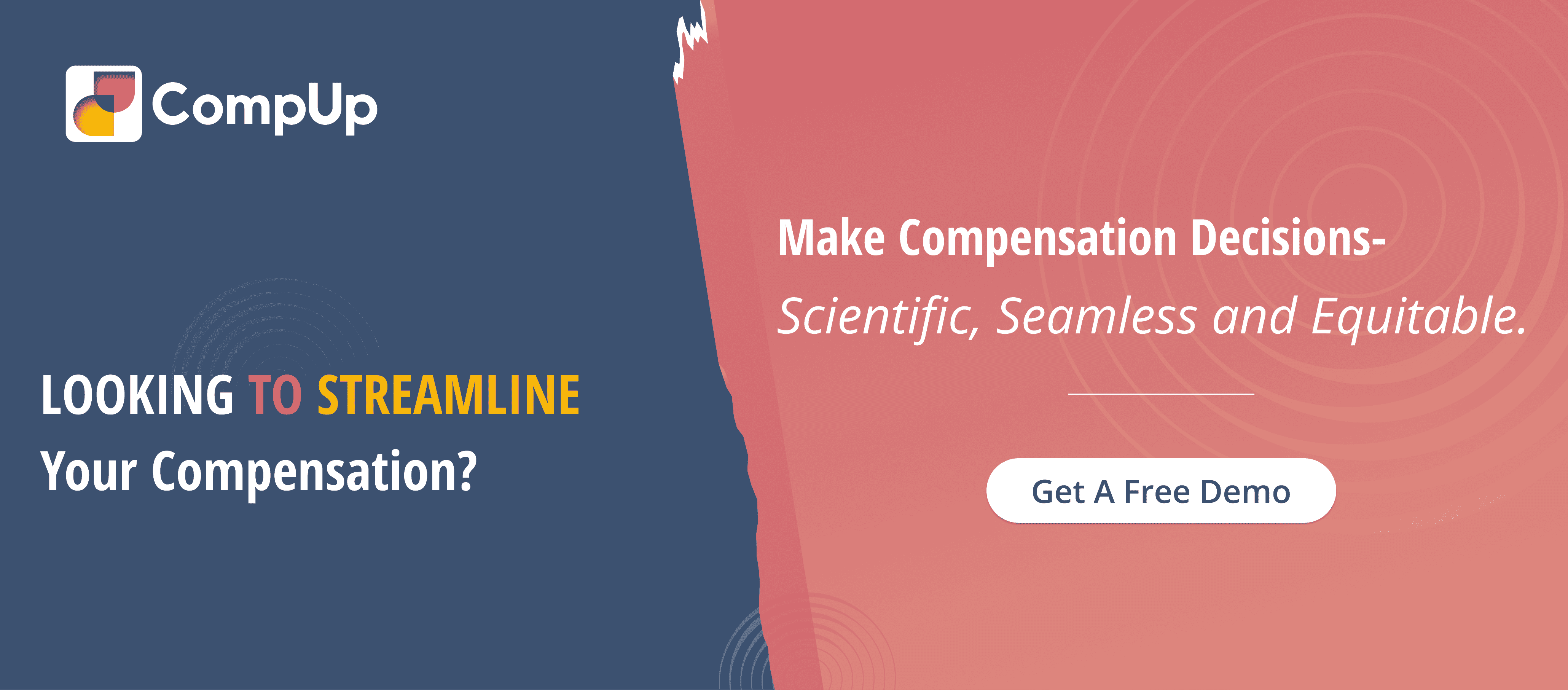
Revolutionizing Pay Strategies: Don't Miss Our Latest Blogs on Compensation Benchmarking